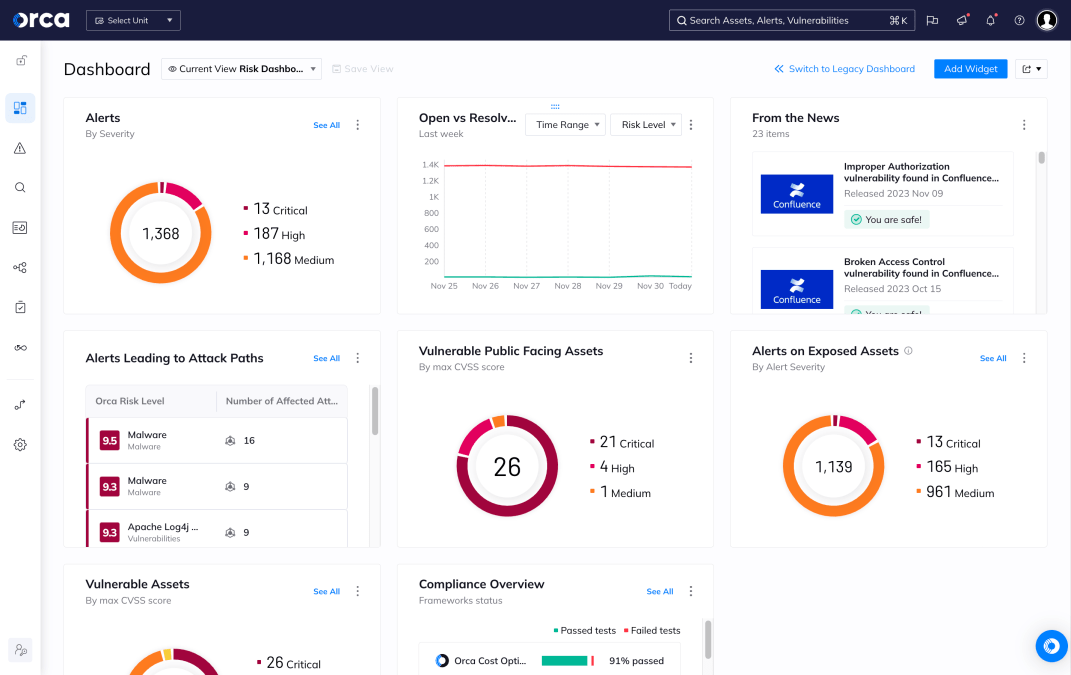Malware detection is the process of identifying malicious software designed to infiltrate, disrupt, or gain unauthorized access to computer systems, applications, and networks. This software, commonly referred to as malware, encompasses a wide range of threats including viruses, trojans, worms, ransomware, spyware, and rootkits. The goal of malware detection is to recognize these threats quickly and accurately before they can cause harm.
In traditional IT environments, malware detection has relied heavily on perimeter-based tools and endpoint protection. However, as organizations shift to cloud-native architectures, containerized applications, and serverless computing, those legacy defenses fall short. Cloud environments require new detection methods tailored to dynamic, distributed workloads and complex infrastructures.
Why is it important?
Malware detection is a foundational component of cybersecurity. Without it, organizations remain blind to a wide spectrum of attacks that can result in:
- Data breaches and loss of sensitive information
- Operational disruptions due to corrupted or inaccessible systems
- Financial damage from ransom payments, regulatory fines, and remediation efforts
- Reputational harm and loss of customer trust
The stakes are even higher in cloud environments, where a single piece of undetected malware can quickly move laterally between services, exfiltrate data from cloud storage, or hijack compute resources across regions. With ransomware and other threats growing in sophistication and targeting cloud-native infrastructure, robust malware detection is critical to minimizing business risk.
Malware detection also plays a key role in regulatory compliance. Frameworks like PCI DSS, HIPAA, SOC 2, and GDPR require organizations to monitor for and respond to malware threats. Without an effective detection strategy, organizations may fail audits or face significant penalties.
How does it work?
Modern malware detection systems use a layered approach to maximize effectiveness and reduce false positives. Key techniques include:
- Signature-based detection: This method compares files or code against databases of known malware signatures. It is fast and effective for previously identified threats but ineffective against zero-day attacks or polymorphic malware.
- Behavioral analysis: Instead of relying on static signatures, behavioral systems monitor how software behaves. Unexpected or suspicious activity (e.g., an application writing to unusual directories or initiating outbound data transfers) may trigger alerts.
- Static and dynamic analysis:
- Static analysis inspects code and files without execution, identifying malicious indicators such as obfuscation or embedded payloads.
- Dynamic analysis runs the file in a sandboxed environment to observe behavior and identify potential threats in real-time.
- Machine learning and AI: These techniques allow systems to detect new or unknown malware variants by analyzing patterns and anomalies in system behavior, file attributes, or network activity.
- Cloud-native analysis: In cloud environments, malware detection often integrates with infrastructure components (e.g., AWS S3 buckets, Kubernetes pods) and log data (e.g., VPC flow logs, CloudTrail) to detect threats across ephemeral or distributed resources.
Security risks and challenges
Malware detection in cloud and hybrid environments is uniquely complex. Key challenges include:
- Ephemeral infrastructure: Cloud assets like containers and serverless functions are short-lived, which gives malware the opportunity to execute and disappear before traditional tools can react.
- Container escape and privilege escalation: Malware that exploits misconfigured container permissions can break out of isolated environments and compromise the host system.
- Shared responsibility confusion: Security teams may mistakenly assume their cloud provider handles malware detection, leading to blind spots.
- Lateral movement: Once malware compromises one workload, it can spread to other connected services or accounts, especially in multi-cloud setups with inconsistent policies.
- Encrypted and obfuscated malware: Attackers increasingly use encryption and obfuscation techniques to evade traditional detection tools.
Best practices and mitigation strategies
To counter evolving malware threats, organizations should adopt a defense-in-depth strategy that includes:
- Layered detection: Combine signature, behavioral, and AI-based detection methods to cover both known and unknown threats.
- Cloud-native monitoring: Ensure visibility into cloud assets including containers, serverless functions, object storage, and APIs.
- Continuous scanning: Implement always-on monitoring and scanning, rather than relying solely on point-in-time assessments.
- Automated response: Use security orchestration and automation to isolate affected assets, trigger incident response playbooks, and contain spread quickly.
- IaC and DevSecOps integration: Scan for malware or malicious code in infrastructure-as-code (IaC) and containers early in the CI/CD pipeline.
- Zero trust enforcement: Limit the blast radius of potential malware by enforcing least privilege and verifying access continuously.
- Regular threat intelligence updates: Keep signature databases, machine learning models, and behavior baselines up to date with the latest threat intel.
How Orca Security helps
The Orca Cloud Security Platform offers advanced malware detection designed specifically for the complexities of modern cloud infrastructure. The platform delivers:
- Agentless-first malware detection across all cloud resources—eliminating deployment overhead and performance drag
- Real-time detection of advanced malware using sensor-based protection for sensitive workloads, enabling immediate response to evolving threats
- Comprehensive and continuous coverage for all cloud assets—including idle, paused, and orphaned systems—with no impact on runtime performance
- SideScanning™ technology that scans cloud environments using snapshots and cloud APIs to locate known, unknown, and potentially malicious code
- Storage-integrated scanning to detect malware in cloud resources such as object storage (e.g., S3 buckets), ensuring all ingress points are covered
- Dynamic and prioritized alerts that analyze malware holistically in the full context of your environment to surface the most critical threats
- Unified visibility and remediation through a centralized dashboard that integrates malware detection with vulnerability management, misconfiguration alerts, and identity risks
This layered and context-driven approach enables organizations to maintain strong malware defenses while accelerating cloud adoption without compromising security.



